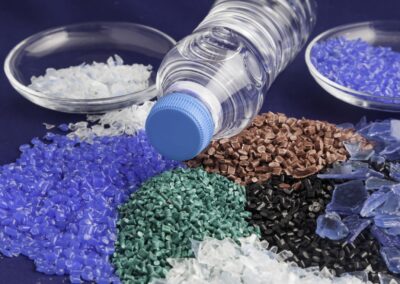Classical package
AMORPHOUS BUILDER Plugin
Features & Capabilities
Monte Carlo technology combined with recoil growth technique for building sophisticated amorphous structures of pure or mixed systems. Interfaces (mono- and multilayered) or docked systems can be built using periodic systems as matrices to grow. Several features enable building of rigid systems at experimental densities.
Summary
AMORPHOUS BUILDER is the primary MAPS tool for building realistic models of pure systems and mixtures, for instance polymeric melts, solutions, multiphase interfaces, surfaces and multilayered structures of any type of materials.
The AMORPHOUS BUILDER interface gives the user control over how the selected components are placed within the simulation box. The user can confine the system between two parallel planes in order to simulate walls or to create a single layer within a multilayer system. Excluded spherical volumes can be defined and molecules can be attached to any point on a surface. These techniques are easily combined to achieve a desired morphology.
AMORPHOUS BUILDER applies advanced quality controls in order to avoid unrealistic concatenation or penetration phenomena. Additionally, AMORPHOUS BUILDER prevents overlap of growth molecules for example polymer chains and nanoparticles in the case of a nano-composite system.
Amorphous systems can be used as input for geometry relaxation or molecular dynamics simulations for predicting static and dynamic properties, such as diffusion coefficients, permeability, viscosity, elastic properties and many others.
References
- D. N. Theodorou, et al. Macromolecules, (1985) 18(7), 1467
- D. Frenkel, 1985 J. Physics: Condensed Matter (1992) 4, 3053 f.
- J. I. Siepmann, D. Frenkel, 1992. Molec. Phys., 75, pp. 59-70.
- J. de Pablo, M. Laso, U. Suter, 1992. J. Chem. Phys. 96(3), 2395f.
- T. J. H. Vlugt et al., 1998. Molec. Phys., 94(4), pp. 727-733.
Summary


